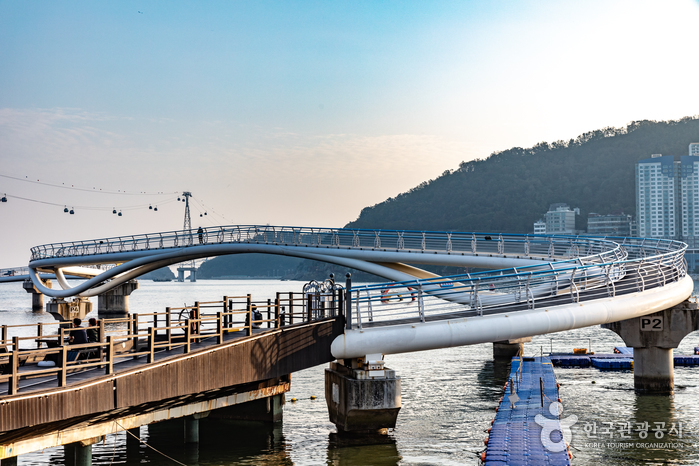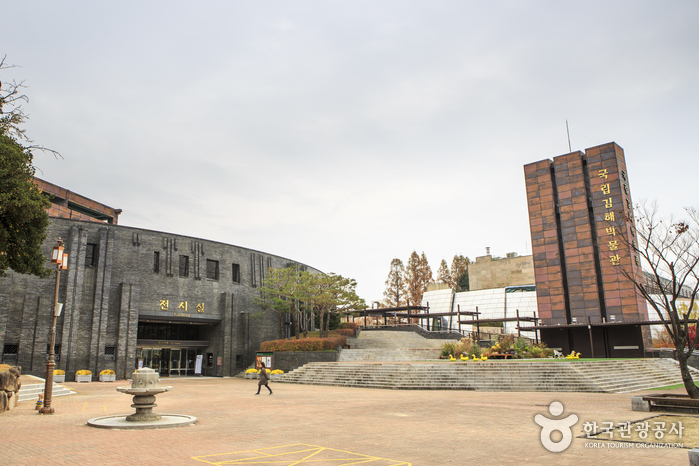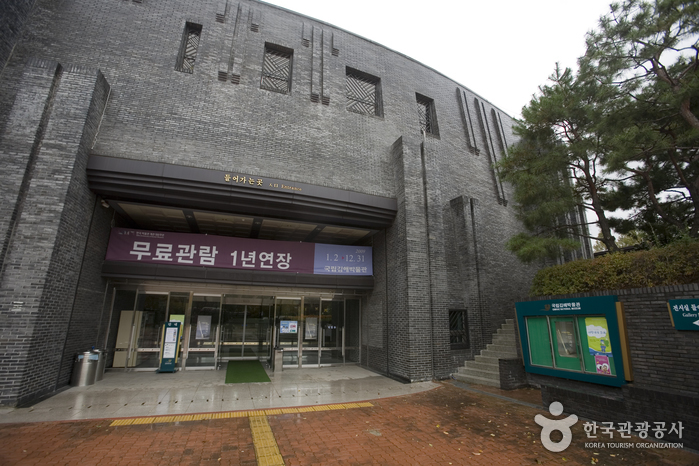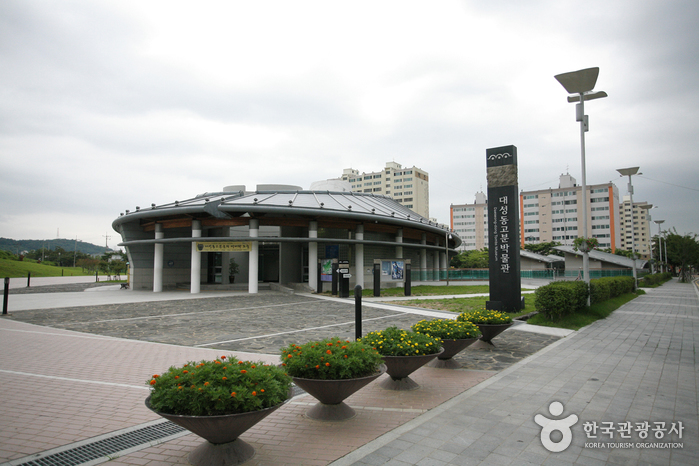Songdo Cloud Walk (송도 구름산책로(스카이워크))
18.3Km 2025-04-15
129-4 Amnam-dong, Seo-gu, Busan
Songdo Cloud Walk is located on the eastern side of Songdo Beach, connecting to Geobukseom Island. The skywalk features sections with a clear glass floor that creates the feeling of walking on top of the ocean. The amazing panoramic view of the surrounding area has made the skywalk a popular destination. First opened in 2015, the 365-meter-long skywalk continues to attract tourists to Songdo Beach.
Café Sea & Tree (씨앤트리 카페)
18.3Km 2024-02-26
808 Ilgwang-ro, Ilgwang-eup, Gijang-gun, Busan
Sea & Tree is a distinctive café and bakery located right on the beach. It encompasses multiple levels, with the café areas stretching from the first to the fourth floors, and a rooftop area on the fifth. The café offers an extensive array of drinks and baked goods. For weekday brunch, they offer Sea & Tree Platter, a special toast salad platter, which includes toast accompanied by various sides and a salad. Each floor of the café boasts a panoramic view of the East Sea. The first floor features an open outdoor setting, while the third and fourth floors are designated as no-kids zones. Additionally, this café operates a pension and a swimming pool, enhancing the leisure options available to visitors.
Ancient Tombs in Daeseong-dong, Gimhae (김해 대성동 고분군)
18.4Km 2020-04-02
126, Gayaui-gil, Gimhae-si, Gyeongsangnam-do
+82-55-330-3934
The tumuli in Daeseong-dong, located to the east of the Royal Tomb of Kim Suro, reflect the formation and development of the Gaya Era. The Daeseong-dong Tumuli are located in the center of the shell mounds of Hoehyeon-ri, the location of the founding of the Gaya Kingdom according to local legend.
The tumuli relics were excavated by researchers from the Kyungsung University Museum from 1990 to 1992 and were found to be the common burial ground of the dominant class of the Gaya Kingdom. On the hilltops, which were viewed as prime burial places, are the tombs of kings and rulers; on the slopes are the tombs of the lower classes.
A total of 136 tumuli were found in the Daesong-dong area. Further investigation of the tumuli revealed several important and interesting facts. First, from the end of the third century, men and horses were buried alive along with the dead. Also, weapons were bent and buried as well, with many of these artifacts being unearthed among the tumuli. Other materials found in the tumuli such as cylindrical bronze items, pinwheel-shaped bronze items, and jasper items showed that Gaya was involved in trade with Japan. The Daeseong-dong Tumuli is significant in that it gives a glimpse into the political and social structure of the Gaya Kingdom, and the cultural exchange between Korea, China, and Japan.
Kang Dong Hospital (강동병원)
18.4Km 2025-07-07
145 Dadae-ro, Saha-gu, Busan
Kang Dong Hospital specializes in orthopedics and internal medicine, featuring world-class experts and comprehensive check-up facilities. It has been designated twice consecutively as an orthopedic specialty hospital by the Ministry of Health and Welfare.
The hospital provides specialized treatment for all orthopedic conditions, including pediatric orthopedics, musculoskeletal correction, and hand and microsurgery clinics.
Kang Dong Hospital has the highest number of revision surgeries for artificial joints in Korea, often performed after initial surgeries at other hospitals. It uses cutting-edge technology for procedures, such as high-tech navigation systems for joint replacement surgeries and spine surgery utilizing Unilateral Biportal Endoscopy (UBE).
Its Spine Center employs the globally recognized and innovative UBE technique to treat spinal stenosis and other complex spinal conditions.
Gimhae National Museum (국립김해박물관)
18.4Km 2024-01-23
190 Gayaui-gil, Gimhae-si, Gyeongsangnam-do
The Gimhae National Museum was opened on July 29, 1998, in order to research and preserve the cultural heritage of the ancient kingdom of Gaya. The museum is at the foot of Gujibong Peak in Gimhae-si, the spot where the kingdom is believed to have been founded. The museum exhibits the cultural assets of Gaya, as well as cultural relics from the prehistoric age in the Busan and Gyeongsangnam-do areas, and the cultural heritage of Byeonhan, which was the foundation for the growth of Gaya.
The exterior of the museum is made using black bricks representing iron ore and charcoal famous during the Gaya Kingdom. There are two exhibition halls, while the walkway to the halls have approximately 1,300 artifacts in display.
Seollal Traditional & Cultural Event of Gimhae National Museum (국립김해박물관 설맞이 전통문화행사)
18.4Km 2020-03-21
190, Gayaui-gil, Gimhae-si, Gyeongsangnam-do
• 1330 Travel Hotline: +82-2-1330
(Korean, English, Japanese, Chinese) • For more info: +82-55-320-6821
To greet Seollal, one of the biggest national holidays in Korea, Gimhae National Museum hosts a “Seollal Traditional & Cultural Event.” During the event, visitors can take part in traditional activities and view regional cultural assets.
Museum of the ancient tombs in Daseong-dong (대성동고분박물관)
18.4Km 2023-01-02
126, Gayaui-gil, Gimhae-si, Gyeongsangnam-do
+82-55-350-0401
The Museum of the ancient tombs in Daseong-dong displays artifacts unearthed from the four excavations of the Daeseongdong Tumuli. Highlighting often overlooked relics of the Geumgwan Gaya, the museum has three ground-floor exhibit halls and several underground auxiliary facilities. The main exhibits include a life-sized statue of a mounted soldier and a warrior statue, both recreated based on bones excavated from the tumuli of Yean-ri. The museum relies heavily on videos and dioramas to help visitors explore all the museum has to offer.
Muji - Shinsegae Gimhae Branch [Tax Refund Shop] (MUJI 신세계김해)
18.5Km 2024-04-17
1F, 2232, Gimhae-daero, Gimhae-si, Gyeongsangnam-do
-
Coach - Shinsegae Department Store Gimhae Branch [Tax Refund Shop] (코치 신세계백화점 김해점)
18.5Km 2024-04-18
2232, Gimhae-daero, Gimhae-si, Gyeongsangnam-do
-
Uniqlo - Shinsegae Gimhae Branch [Tax Refund Shop] (유니클로 신세계김해)
18.5Km 2024-04-23
2232, Gimhae-daero, Gimhae-si, Gyeongsangnam-do
-





![Muji - Shinsegae Gimhae Branch [Tax Refund Shop] (MUJI 신세계김해)](http://tong.visitkorea.or.kr/cms/resource/30/2885930_image2_1.jpg)
![Coach - Shinsegae Department Store Gimhae Branch [Tax Refund Shop] (코치 신세계백화점 김해점)](http://tong.visitkorea.or.kr/cms/resource/32/2885932_image2_1.jpg)
![Uniqlo - Shinsegae Gimhae Branch [Tax Refund Shop] (유니클로 신세계김해)](http://tong.visitkorea.or.kr/cms/resource/34/2885934_image2_1.jpg)
 English
English
 한국어
한국어 日本語
日本語 中文(简体)
中文(简体) Deutsch
Deutsch Français
Français Español
Español Русский
Русский